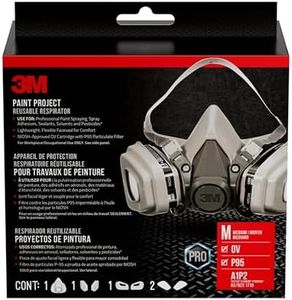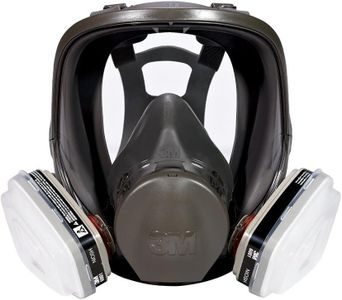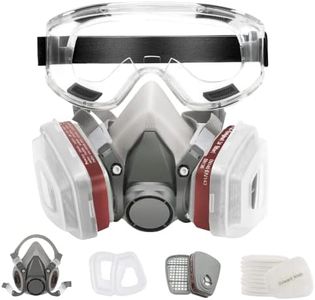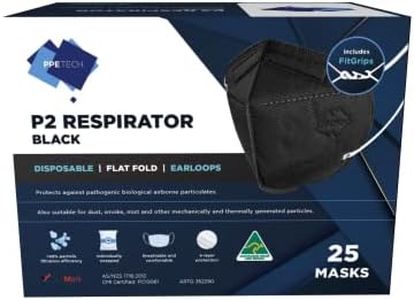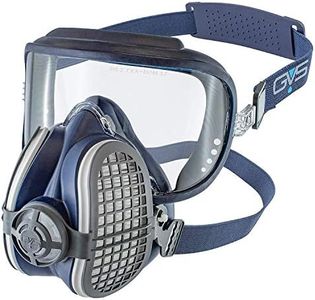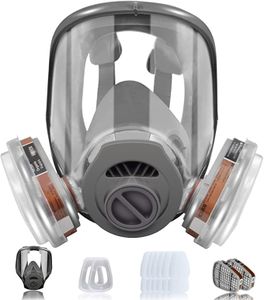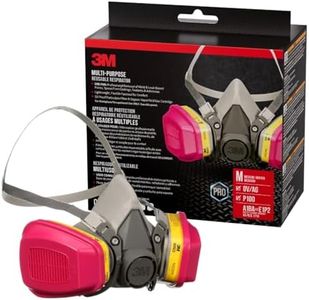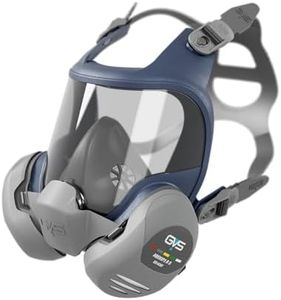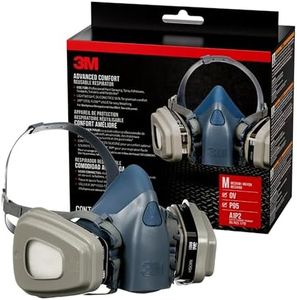We Use CookiesWe use cookies to enhance the security, performance,
functionality and for analytical and promotional activities. By continuing to browse this site you
are agreeing to our privacy policy
10 Best respirators
From leading brands and best sellers available on the web.Buying Guide for the Best respirators
Choosing the right respirator is all about ensuring your breathing is protected from harmful substances. Whether you need protection from dust, fumes, chemicals, or infectious agents, it's important to match the respirator to the environment and your personal comfort. Start by considering what you need protection from and how much time you'll spend wearing it. Reading the product labels and certification marks is essential as these reveal much about the safety and suitability of the respirator for different applications.Filtration EfficiencyFiltration efficiency is how well a respirator can filter particles and contaminants from the air you breathe. This is typically shown as a percentage, such as 95%, 99%, or 100%. Higher numbers mean better protection. This specification matters because it determines what kinds of hazards the respirator will keep out—higher efficiency is important in situations with fine particles, smoke, or biological threats, while lower efficiencies might be enough for larger dust particles. If you're dealing with dangerous dust, fumes, or viruses, go for higher filtration. For occasional, low-risk tasks, a moderate level might be enough.
Respirator TypeThere are several types of respirators, including disposable, reusable half-face, and full-face models. Disposable respirators are often lightweight and good for short-term use in low-risk situations. Reusable types, such as half-face or full-face respirators, usually have replaceable filters and offer more durability and sometimes a better seal. Full-face versions protect both your lungs and your eyes, which is important around chemicals or severe hazards. Choose the type based on how long and how often you'll use it, as well as the level of hazard in your environment.
Fit and SealThe fit and seal of a respirator refers to how well it molds or tightens to your face, preventing unfiltered air from sneaking in. Good fit is crucial—no matter how good the filter is, if the mask doesn't seal against your face, contaminants can get through. Models often come in multiple sizes and may have adjustable straps. For best protection, especially in hazardous environments, ensure you test the fit and check that there are no air leaks around the edges of the mask.
Valve PresenceSome respirators have exhalation valves, which make it easier to breathe out and can reduce heat buildup inside the mask. This is especially helpful during long periods of use or in hot environments, as it adds comfort. However, if you're trying to prevent spreading germs to others (such as in a medical or public health setting), you might not want a valve, since it doesn't filter exhaled air. Pick a respirator with a valve for tougher, sweaty jobs where comfort is a priority, and go valve-free if you're focused on stopping the spread of illness.
Certifications and StandardsRespirators are tested and certified by various agencies according to safety standards, such as NIOSH (in the United States) or EN (in Europe). These marks indicate the respirator has passed tests for filtration and fit. It's important to check for certification to ensure what you're buying is truly protective and not just a lookalike or fashion mask. Depending on your region and needs, look for these marks as a sign of reliability, especially for high-risk or professional uses.
Comfort and BreathabilitySince you may need to wear a respirator for extended periods, comfort and breathability are important features. Some models have soft padding, adjustable nose pieces, and lightweight designs to make them easier on your face and head. Higher filtration can sometimes make breathing a bit harder, so balance protection with your ability to wear the mask for as long as you need. Think about the physical demands of your task and how sensitive you are to discomfort.
